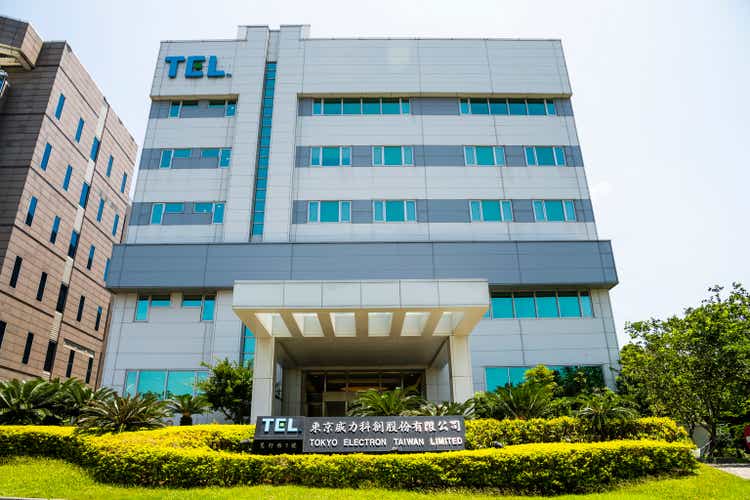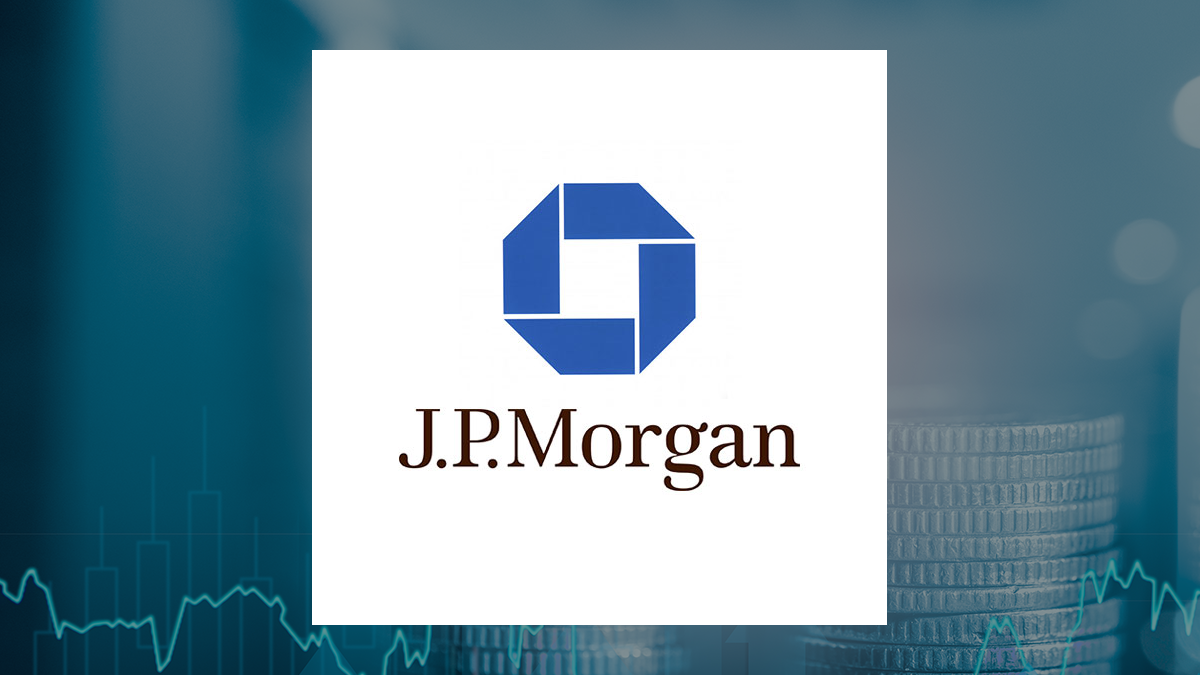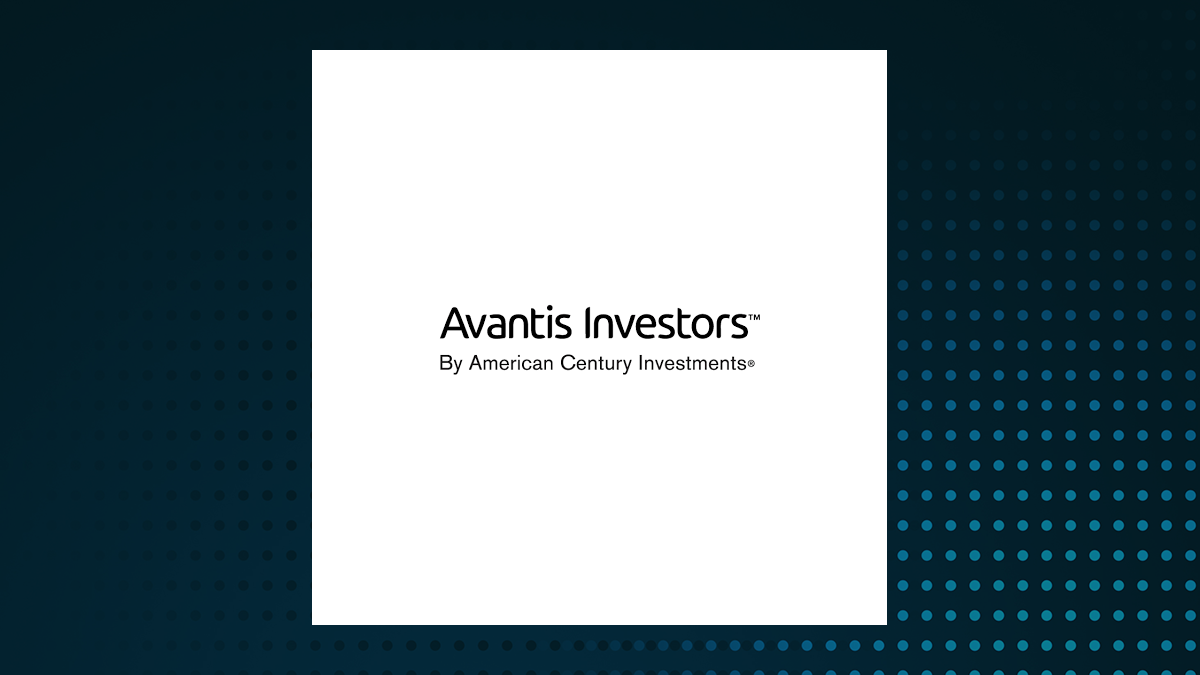
BING-JHEN HONG/iStock Editorial via Getty Images We began covering Tokyo Electron ( OTCPK:TOELY )( OTCPK:TOELF ) a little over two years ago, and since then, shares have meaningfully outperformed the S&P 500 Index ( SP500 )( SPY ). Last year, we updated our thesis to a 'Hold', as we saw shares fully valued and potential headwinds. While the share price has changed very little in the past year, fundamentals are in an uptrend again for the company.
The valuation is starting to appear reasonable again, although we would like to see some margin of safety in the valuation before buying. With the enormous attention that the semiconductor sector ( SOXX ) has been getting the last few years, even foreign companies like ASML ( ASML ) and even Tokyo Electron are becoming better known by investors in the U.S.

As we mentioned when we started covering the company, almost every chip manufactured in the world goes through at least one machine built by Tokyo Electron, yet the company is not a household name outside Japan. We see this as a blessing in disguise; otherwise, it would probably be trading at much higher valuation multiples. In any case, we remain optimistic about the long-term prospects of the company, which continues to increase the amount spent on R&D, and continues to relentlessly increase its competitive moat.
The company continues to come up with new innovations and efficiencies, which have resulted in increased revenue and profit margins. For fiscal year 2025 Tokyo Electron is guiding for record revenue, operating profit, and earnings per share (EPS). First Quarter of Financial 2025 Results Tokyo Electron began fiscal year 2025 with solid results, despite a declining contribution from DRAM and non-volatile memory, logic chips rose enough to help the company deliver strong earnings.
Revenue reached ¥555 billion in Q1, a 1.4% sequential increase, and 41% year-over-year growth. Similarly, net income rose slightly sequentially to ¥126.
1 billion, 1% higher compared to Q4 of FY2024, but 96% higher year-over-year. Tokyo Electron continues to ramp-up its R&D spending, which grew to ¥53 billion in the quarter, up 8.5% sequentially, and 22% year-over-year.
We like to see this type of commitment to staying at the cutting-edge of technology. Research and Development Looking more in detail at the company's CapEx and R&D spending, it is clear that it is not holding back. It estimates its R&D expense for FY2025 will grow to ¥253 billion, up significantly from the ¥202 billion spent in FY2024 and the ¥191 spent in FY2023.
Tokyo Electron is also spending significantly above its depreciation expense, with CapEx plans for the year of ¥170 billion, meaningfully higher compared to the ¥63 billion expected in depreciation. Some of this spending will go into new production and logistics sites, and R&D facilities. Results from these investments can be seen in some of the recently launched products, such as the single-wafer deposition system "Episode Series" which is aimed at advanced device scaling and 3D structures.
The company also announced the "Episode 2" systems, which will enable deposition of high-quality films at high throughput. Tokyo Electron also announced a gas cluster beam system called “Acrevia,” which helps reduce costs in the EUV patterning process. While the company has already shipped samples to customers of some of these cutting-edge devices, it does not expect them to contribute significantly to revenue until FY2027.
Financials Despite the inherent cyclicality of the semiconductor industry, Tokyo Electron has managed to more than double its revenue over the past decade. At the same time, it has increased its gross profit and operating margins very significantly. As a result, earnings per share more than tripled during this time, even if they are currently slightly below the peak reached roughly two years ago as the market weakened.
Still, we believe it is just a matter of time for the company to deliver new record levels of revenue and earnings. Data by YCharts Balance Sheet Another thing we appreciate about Tokyo Electron is the strong balance sheet, which has an investment grade credit rating of AA according to the Japan Credit Rating Agency (JCR). This is not surprising given that the company basically has no long-term debt, it has significant amounts of cash and short-term investments, and is solidly profitable.
Data by YCharts Shareholder Returns Tokyo Electron is guiding for a FY2025 full-year dividend per share of ¥519, which translates to a forward dividend yield of 2.35% based on the recent closing price of the native shares of ¥22,000. When adding the ¥79.
9 billion the company is planning to spend on share repurchases, the total shareholder yield should exceed 3% at current prices. As a reminder, TOELY is the ticker for the ADR, which represents half a native share given the 2:1 ratio of depository receipt to underlying native share. It is also important to remember that Japanese companies tend to vary their dividends depending on recent earnings, and Tokyo Electron has a dividend policy where it aims to maintain a 50% payout ratio.
As a result, dividends tend to vary more than they do in the U.S. Data by YCharts Future Outlook The semiconductor industry currently appears to be bifurcating, with weakening demand from some of the more traditional chip customers such as auto manufacturers, while data center and AI investing continues to see significant growth.
Smartphone and PC demand is starting to recover but remains below peak levels. As a result, it is in the advanced logic foundry where Tokyo Electron is seeing stronger demand, which the company expects will offset weakness in demand for more mature nodes. Taking everything together, the company is guiding for double-digit growth in calendar year 2025, which leading-edge semiconductor technologies used for AI delivering the strongest boost.
Other semiconductor advancements, such as High Bandwidth Memory (HBM) and Gate-All-Around (GAA) should further add to Tokyo Electron's business opportunities. The company is guiding for earnings per share of ¥1,036 for fiscal year 2025, a significant increase compared to the ¥783 delivered in fiscal year 2024. Valuation Based on the most recent guidance from the company, the forward Price/Earnings ratio would be slightly less than 22x at current prices.
This is still slightly above the ten-year average for the company, but it is approaching what we consider a reasonable valuation. Other valuation metrics, such as Price/Book and Price/Sales, are similarly above their historical average, but have come down significantly in recent quarters. Some of the expansion in valuation multiples is warranted, given that Tokyo Electron has improved its profit margins in the past ten years.
Data by YCharts Compared to other semiconductor equipment manufacturers, Tokyo Electron has one of the lowest EV/EBITDA multiples. Still, on an absolute basis, a 17x EV/EBITDA multiple is not exactly a bargain. In any case, we see Tokyo Electron approaching the buying zone, with shares currently reasonably valued, but we like to buy with at least a 10% to 20% valuation margin of safety.
Data by YCharts Risks The biggest risk we see for the company is that some customers might significantly reduce their expansion plans. For example, Intel ( INTC ) had previously announced ambitious expansion plans, which are now less certain, with the company even considering splitting itself in two and perhaps even scrapping factory projects. Other major chip manufacturing sites, like Taiwan Semiconductor's ( TSM ) Arizona project, are experiencing delays .
It remains to be seen how many announced factories are actually built, and if some that recently broke ground, like Taiwan Semiconductor's factory in Germany , are finished on time. It also does not help that manufacturing capital expenditures have been in a downtrend and could potentially go down further if the U.S.
economy enters a recession. Data by YCharts Conclusion Tokyo Electron's first quarter of fiscal year 2025 and their full-year guidance were strong, and we see shares approaching a reasonable valuation again. At the same time, we see several risks that could reduce demand for the company, including a potential recession in the U.
S., and some chip factory projects that might get cancelled. For these reasons, we will wait for a bigger valuation margin of safety before seriously considering investing.
Still, we will pay more attention to the shares, as they are now relatively close to what we would consider an attractive level after some years trading at excessive valuation multiples. Editor's Note: This article discusses one or more securities that do not trade on a major U.S.
exchange. Please be aware of the risks associated with these stocks. Analyst’s Disclosure: I/we have a beneficial long position in the shares of TSM either through stock ownership, options, or other derivatives.
I wrote this article myself, and it expresses my own opinions. I am not receiving compensation for it (other than from Seeking Alpha). I have no business relationship with any company whose stock is mentioned in this article.
The information contained herein is for informational purposes only. Nothing in this article should be taken as a solicitation to purchase or sell securities. Before buying or selling shares, you should do your own research and reach your own conclusion, or consult a financial advisor.
Investing includes risks, including loss of principal. Seeking Alpha's Disclosure: Past performance is no guarantee of future results. No recommendation or advice is being given as to whether any investment is suitable for a particular investor.
Any views or opinions expressed above may not reflect those of Seeking Alpha as a whole. Seeking Alpha is not a licensed securities dealer, broker or US investment adviser or investment bank. Our analysts are third party authors that include both professional investors and individual investors who may not be licensed or certified by any institute or regulatory body.
.














